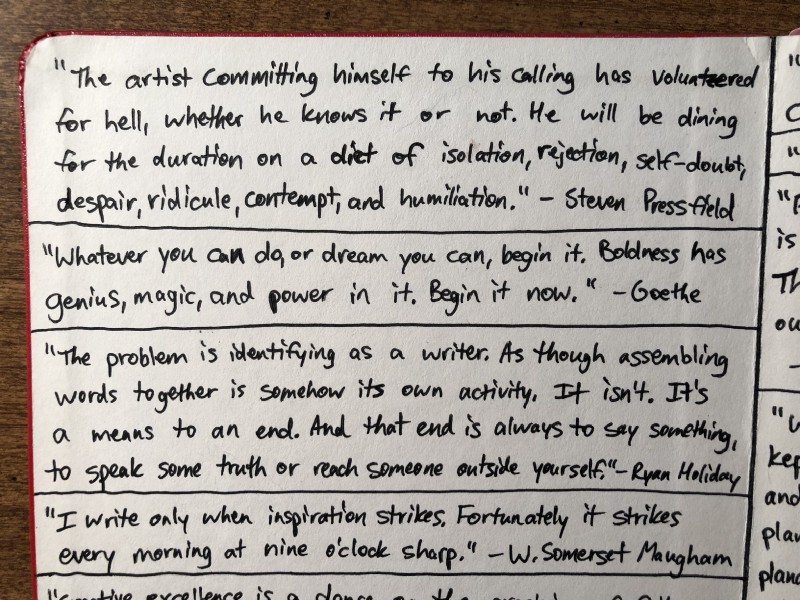Use Your Struggles as Alternative Fuel
In the past month, I’ve had more articles turned down by publications than any other month in my writing career.
But with each rejection, I’ve gained a bigger chip on my shoulder.
I want to prove those organizations wrong for doubting me. I want to show them what they’re missing.
This same perverse motivation has fueled creative professionals for years.
As a young writer, Stephen King pounded a nail into his bedroom wall to collect the rejection slips he received from publishers. Every failed submission became fuel for his writing.
“By the time I was fourteen (and shaving twice a week whether I needed to or not) the nail in my wall would no longer support the weight of rejection slips impaled upon it. I replaced the nail with a spike and went on writing.” -Stephen King
James Patterson kept a list of the 31 publishers who rejected his first novel.
Similarly, literary goddess J.K. Rowling put her first rejection letter for Harry Potter on her wall to remind her that she was now just like her favorite authors who had also been rejected. (Rowling would receive eleven more rejections from publishers before Bloomsbury accepted Harry Potter.)
In a recent appearance on the Netflix show My Next Guest Needs No Introduction with David Letterman, Kanye West talked about using negative comments as “alternative sources of energy.” He said facing obstacles can give us more energy to do our creative work.
“You can take your energy from people telling you [that] you can’t do stuff. Even [when I was] working on fashion, everyone was like, ‘You can’t do clothing’ and it just gave me more energy.” -Kanye West
It’s easy to feel good about your work when you hear a bunch of positive feedback. But negative comments or setbacks can be equally motivating if we can find a way to harness the energy from them.
The question is: how do we harness this energy?
How can we use our challenges as an alternative fuel to drive us further?
1. Mentally prepare for difficulty.
It’s easier to overcome challenges when you know they’re coming.
Rather than expecting smooth seas on your creative journey, it’s much better to expect tidal waves and typhoons.
“The artist committing himself to his calling has volunteered for hell, whether he knows it or not,” writes author Steven Pressfield. “He will be dining for the duration on a diet of isolation, rejection, self-doubt, despair, ridicule, contempt, and humiliation.”
When I read the above quote in Pressfield’s book The War of Art, I realized that I could either view that quote as depressing or I could view it as empowering. I chose the latter — even going so far as to write that quote on the inside cover of my writing notebook (depicted below).
By preparing for stormy seas, we become better sailors.

2. Use your rejections as a rallying cry.
We can view any rejection or setback in one of two ways:
- Career-ending OR life-changing
- Discouragement OR inspiration
- Suppressant OR fuel
- Death march OR rallying cry
Our perspective determines whether an obstacle becomes a negative thing or a positive one. We get to choose.
Which do you choose?
3. Write down your struggles.
When I began taking my writing seriously, one of the first things I did was set aside two pages in my writing journal to document my writing rejections.
I left room for two full pages because I wanted to prepare myself for how many rejections I would face.
To this day, I take pleasure in looking at the initial entries on that rejections page. The list reminds me that initial rejections don’t mean much. After all, my first two articles on that list were later published elsewhere, and Medium decided to curate both articles.
That rejection page also reminds me that I have the courage to persevere. It’s an implicit reminder that I’m the type of person who gets pushed down, only to rise back up.
What type of person are you?
How can you use your struggles as alternative fuel today?




